Corsair AX1500i Power Supply Review
by E. Fylladitakis on September 11, 2014 5:00 AM EST- Posted in
- Cases/Cooling/PSUs
- Corsair
- PSUs
- 1500W
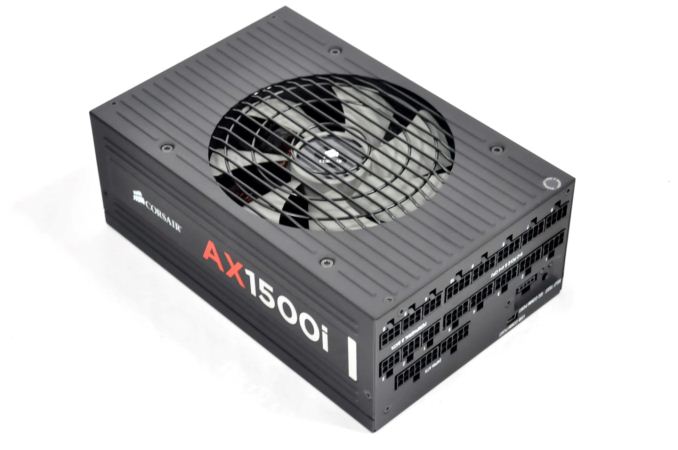
Introduction
A decade ago, the 80 Plus program was introduced with the aim of promoting the development of more efficient and environmentally friendly computer power supplies units (PSUs). When it was officially included in the Energy Star 4.0 specification requirements in 2007, the program really took off, with every manufacturer who had not already certified their units sprinting to do so.
In 2008, it was already easy and fairly cheap to produce 80 Plus certified PSUs, making the original 80 Plus program somewhat obsolete, but the original standard was revised to include differing tiers of efficiency, starting with the 80 Plus Bronze, Silver, and Gold certifications. Two more levels, Platinum and Titanium, were introduced later. These "badges of honor" drove the manufacturers to funnel money into research in order to create better and more efficient units, and they significantly helped their marketing departments as well. Today, users can easily find 80 Plus Gold certified units at very reasonable prices for their home computers, and 80 Plus Titanium certified units for servers have already been available for a couple of years.
The race for more powerful and more efficient PSUs continues to this date, as every manufacturer is trying to get ahead of the competition by either developing more efficient units, or by producing cheaper units with the same level of efficiency. Today we will look at Corsair's attempt to show us who's the true king of the hill, as we are going to review the AX1500i, a fully digital 1500 Watts PSU with an 80 Plus Titanium certification and an impressive list of features.
The AX1500i is one of the first 80 Plus Titanium certified consumer PSUs, as well as one of the most powerful units currently available. These facts do help explain the rather insane retail price of $450, perhaps, but there's no question that this is a very niche product. With such a price tag and power output, the AX1500i is intended only for very advanced users and hardcore gamers who are willing to pay as much as a small home/office PC costs just to get the best PSU possible. However, this segment of the market is very demanding as well – does the Corsair AX1500i has what it takes to please such users? We will find out in this review.
| Power specifications ( Rated @ 50 °C) | |||||
| AC INPUT | 100-240 VAC, 50-60 Hz | ||||
| RAIL | +3.3V | +5V | +12V | +5Vsb | -12V |
| MAX OUTPUT | 30A | 30A | 125A | 3.5A | 0.8A |
| 180W | 1500W | 17.5W | 9.6W | ||
| TOTAL | 1500W | ||||
Packaging and bundle
The black, serious cardboard box of the AX1500i somehow hints at the proportions of the power supply. It is not deeper or taller than typical PSU packaging, but it is much wider. Information on the most vital features and performance aspects of the AX1500i can be found on the rear of the box.
For a product of this class, the bundle can definitely be described as substandard. There is only a set of four black screws, a case badge, and a C19 power cable. Note that the vast majority of consumer-grade PSUs are making use of C13 cables; C19 cables are more commonly found on servers and larger electronic appliances. Beyond the above, there are no cable ties, no cable straps, and no other accessories whatsoever included with the AX1500i, which is very strange for a product with such a price tag.
Every single cable of the AX1500i, including the 24-pin ATX cable, is a flat, ribbon-like cable with no sleeving. All of the connectors and wires are black, making them perfect for those builders that they do not want their PSU cables to stand out visually.


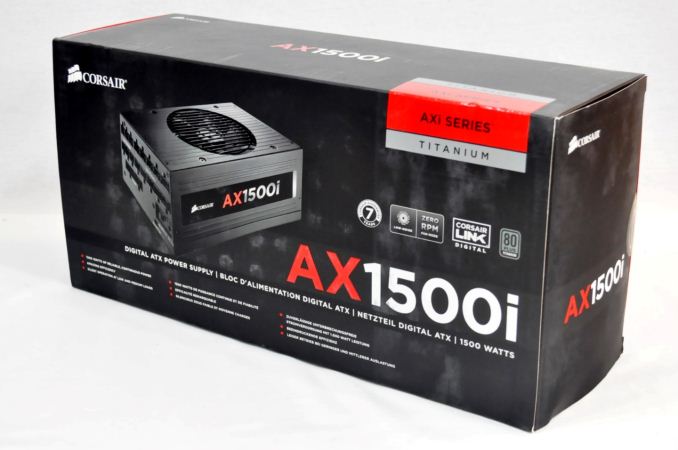
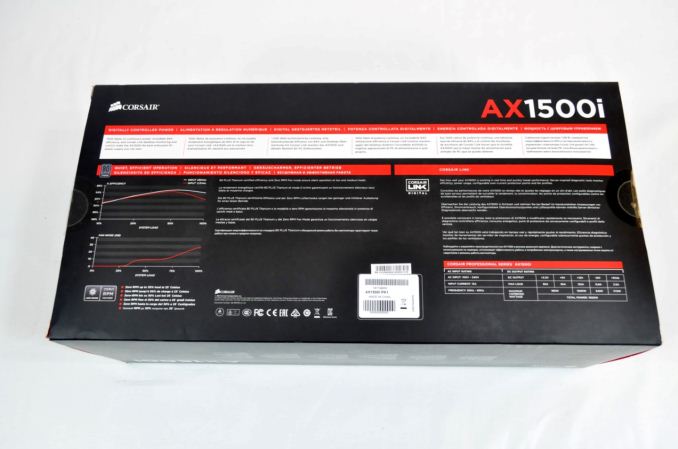
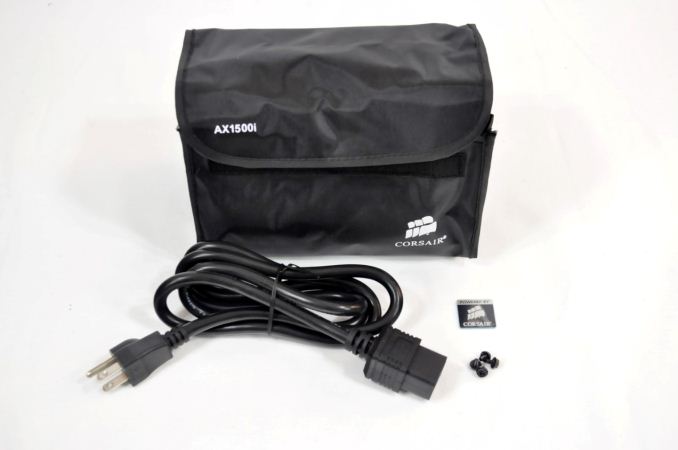
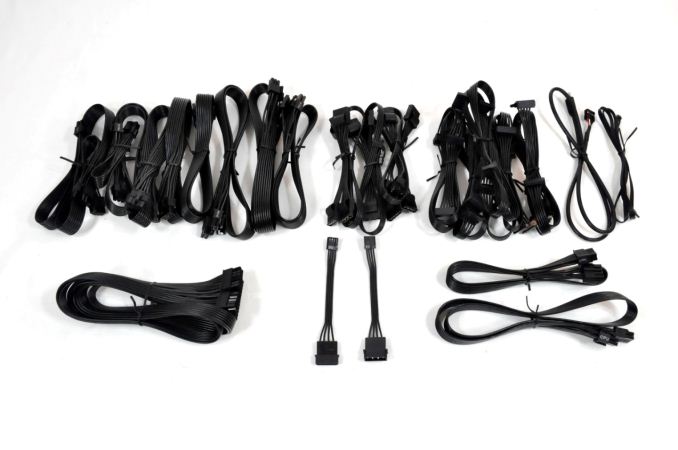








55 Comments
View All Comments
Pissedoffyouth - Thursday, September 11, 2014 - link
In the scheme of things if you were running this full bore you'd be able to power an extra i3 system as well on 220v.E.Fyll - Friday, September 12, 2014 - link
Actually, no, you should be seeing very similar results. I'm on a 230 V - 50 Hz grid, it is noted in the methodology section.Flunk - Thursday, September 11, 2014 - link
Why would a power supply need accessories? When I'm buying a power supply the unit itself is all I care about. Bundle a power cable that won't burn the house down and I'm good. The case badge, screws and bag are totally unnecessary.Vatharian - Thursday, September 11, 2014 - link
I consider spare cables with different plug configurations, if PSU is modular, a very good accessory. Screws always come in handy - if you don't need them just shove back in the box, but sometimes you have to build in the wild, where you don't have any extras. Over the years I accumulated nearly geological layer of such accessories from hundreds of devices, but sometimes it just happens you need them. Of course if you throw them out (or don't get them in the first place), there will be time you miss some :) And sticker is always handy too - I have a friend that's sticker junkie, his PC looks like it had accident at the printer shop)DanNeely - Thursday, September 11, 2014 - link
Gotta agree with the extra cables. A few 2/3 port molex/sata cables mean a lot less having to manage extra cable when you don't need all 4 ports on them. I've seen some vendors offer an alternate cable package (different plug counts, shorter cables, extra long cables, extenders, etc); but at this price I'd expect to see at least some of that tossed in.For that matter, why is modularity limited to the PSU-cable connection itself. Make a few cables that will let you break off the last connector or two to shorten them.
JlHADJOE - Thursday, September 11, 2014 - link
It's probably cheaper to just include a bunch of cables with shorter run/fewer terminations and be able to use standard components, than to engineer a completely new terminal with a breakoff/attachment point just to be able to provide a shorter cable.DanNeely - Friday, September 12, 2014 - link
All they'd need to do is take molex Y cables, and put both downstream connectors on the same cable; and then do the same with sata power connectors. No major engineering effort needed.hrrmph - Thursday, September 11, 2014 - link
What a sloppy review. It reads like an impassioned love letter. And hardly a comparable product mentioned or charted.My comments shouldn't be taken as directed at the product - I have no quarrel with the power supply - just the squishy drivel being published in an attempt to describe it.
sweetca - Thursday, September 11, 2014 - link
Question: Stipulating an identical draw of power, would this PSU, compared to a similar PSU with a lower max output, result in less heat generated?An example for clarification: System X draws 500 Watts. Would there be a difference in total heat generated, whether System X had a 1000 Watt PSU or 1500 Watt PSU? The assumption being the quality of both PSU's were almost identical
davidgirgis - Thursday, September 11, 2014 - link
Good Question...Heat losses depend on the quality of the PSU components and its ability to sustain such power efficiency at different power draws, so I believe the short answer is No, it shouldn't matter. This reviewer says that this specific power supply provides for good efficiency even at low power draw, meaning that it generates little heat regardless of whether your load is 200 or 1500 watts.
Of course your hypothetical 500W system will draw 500W at times, but maybe only 50W when idle...
The advantage of having more power than you need is to let the components breathe better, widen the pipeline so to speak. You may not need 1500W, but the extra headroom provides for stabilty and overclocking potential.
hope this helps...